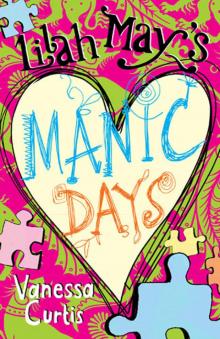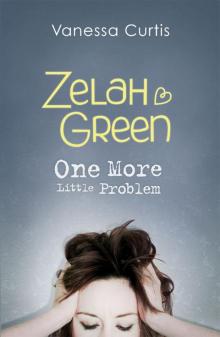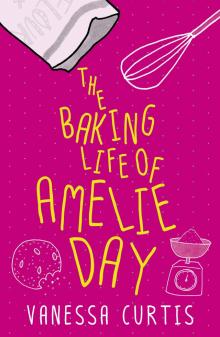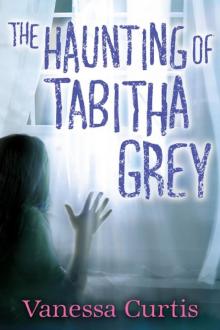- Home
- Vanessa Curtis
Virginia Woolf's Women
Virginia Woolf's Women Read online
Virginia Woolf’s Women
VANESSA CURTIS
Foreword by
Professor Julia Briggs
For Sue Fox, with heartfelt thanks for research,
inspirational friendship and shared enthusiasm
Contents
Title Page
Dedication
Acknowledgements
Foreword by Professor Julia Briggs
Introduction
1 The ‘Angels in the House’ – Maria, Julia and Stella
2 Vanessa
3 Violet
4 Ottoline and Katherine
5 Carrington
6 Vita
7 Ethel
8 Virginia
Afterword
Copyright
Acknowledgements
I would like to thank Angelica Garnett for permission to quote from her Eternal Moment and Henrietta Garnett, on behalf of the Estate of Vanessa Bell, for allowing me to reproduce quotations from both Sketches in Pen and Ink and letters sent from Vanessa Bell to Leonard Woolf. Anne Olivier Bell kindly provided a photocopy of Stella Duckworth’s Diary for 1893 (in her possession). Thanks also go to The Hon. Mrs C. Zielenkiewicz for permission to quote from a letter written by Ethel Sands, and to staff at the Lilly Library, Indiana University, Bloomington, who provided photocopies of the correspondence of Ottoline Morrell and granted permission to quote from the MacCarthy and Gathorne-Hardy manuscripts in their possession.
Dr Rosalind Moad at King’s College Library, Cambridge, provided photocopied information and allowed me to quote from the King’s College Archive, as well as granting permission to publish a photograph of Carrington from the E.M. Forster Archive. I would like to thank Dorothy Sheridan and her very helpful staff at the University of Sussex for providing access to the Monk’s House and Charleston Papers, and the Society of Authors, as the Literary Estate of Virginia Woolf, for permission to include fragments of unpublished material held in the Monk’s House Papers at the University of Sussex.
Staff at the Hulton Getty picture library assisted with the supply and reproduction of four photographs. Matthew Bailey at the picture library of the National Portrait Gallery, London, granted permission to publish photographs of Vanessa Bell, Ottoline Morrell and Julia Margaret Cameron. Jennifer Booth and staff at the Tate Gallery Archive supplied photographic illustrations from Vanessa Bell’s Family Album and the Tate Gallery/Charleston Trust granted permission to publish them.
Joy Burden allowed me to quote from her Winging Westward and provided personal recollections of Violet Dickinson. Karen Kukil and Barbara Blumenthal from the Mortimer Rare Book Room, Smith College, USA, supplied photographs from Leslie Stephen’s photograph album and granted permission to publish them.
I should like to thank Frances Partridge for permission to quote from unpublished Carrington letters held at the Berg Collection, New York Public Library, and from her book, Julia. Richard Garnett granted permission for me to quote from Carrington, Letters and Extracts from her Diaries. Steve Crook at the Berg Collection, New York Public Library, has provided information and photographs relating to Violet Dickinson, and allowed me to study a copy of Stella Duckworth’s Diary for 1896.
Sue Fox meticulously researched the lives of Julia Stephen, Violet Dickinson, Ottoline Morrell and Ethel Smyth. Adrian M. Goodman, as copyright holder for Ottoline Morrell, gave me permission to quote from her diaries and correspondence. David Higham Associates, as copyright holders for Dame Ethel Smyth and Osbert Sitwell, allowed me to quote from their diaries and correspondence. The Hon. Lord Sackville, Knole, as copyright holder for Eddie Sackville-West, granted permission to quote from a letter to Vanessa Bell.
Several people who have assisted in my research for this project are also friends. My thanks go to Jonathan and Caroline Zoob at Monk’s House for their kind hospitality and enthusiasm. Nigel Nicolson has provided much useful information about Vita Sackville-West and has been endlessly hospitable. I thank Nigel for permission to quote from Portrait of a Marriage, The Letters of Vita Sackville-West and Virginia Woolf, Collected Poems of Vita Sackville-West, Pepita and his recent biography of Virginia Woolf.
A valued member of the Virginia Woolf Society Reading Group, Hilary Newman, offered books and information on both Violet Dickinson and Ethel Smyth. Sue and Nigel Bedford, during their years at Talland House, supplied both friendship and assistance with research – they will be sorely missed.
I am grateful and honoured that Professor Julia Briggs has contributed a valued foreword to this book. Sincere thanks must also go to Professor Katherine Hill-Miller for her essential help and advice during the formative stages of this project. Mr Jim Peers has kindly allowed me to quote from the late Rosamund Peers’s PhD thesis on Virginia Woolf. Warm thanks go to Cecil Woolf for providing a short reminiscence of his ‘Aunt Virginia’ and for always showing such interest and support.
Jasmyne King-Leeder allowed me inside her private home at 22 Hyde Park Gate and provided articles and information about the Stephen family. Mary Cowin kindly provided clippings and much relevant information. My neighbour, Anna Parker-Rees, thoughtfully passed on relevant articles as and when she found them. As ever, my colleagues on the Executive Council of the Virginia Woolf Society of Great Britain have been generous enough to share their vast knowledge with me: Sheila M. Wilkinson provided copies of music composed by Ethel Smyth, Paul Evans kindly loaned books in his possession, Ruth Webb lent me her copy of Vanessa Bell’s Family Album and shared her experiences of being a biographer, and Sandra Halsey helped with information relating to Carrington and Vita Sackville-West. Stuart N. Clarke, as always, has proved to be a walking encyclopaedia. I should like in particular to thank Stephen Barkway not only for providing a copy of Friendship’s Gallery and useful information on Katherine Mansfield, but also for his quietly infectious enthusiasm for Virginia Woolf, which in turn helped me develop my own.
I would like to offer special thanks to my husband, Tim Cowin, for assistance with photographic reproductions and research. His willingness to traipse round all sorts of houses in inclement weather has been much appreciated. Also my family, David, Carol and Timothy Curtis, for their consistent encouragement and for instilling in me the love of books.
Finally, I should like to thank all the staff at Robert Hale for their constructive help and support on this project.
Foreword
by Professor Julia Briggs
Virginia Woolf published her earliest writings anonymously, yet although she disguised her gender beneath a genderless first person plural (‘Mr Courtney, we think, feels some of this difficulty …’), her interest in the nature of women, what it meant to be a woman and, above all, what it meant to be a woman writer (or painter, or composer) is evident from the outset.
Visiting Haworth, she noticed Charlotte Brontë’s shoes and her thin muslin dress, and the little oak stool that Emily took with her on ‘her solitary moorland tramps’. Reviewing a male-authored book in The Feminine Note in Fiction, she wondered whether ‘the adequate critic of women’ might not herself be a woman. Her concern with women’s creative powers prompted her to write of women as historians and novelists, as musicians and mathematicians. In 1910, at the instigation of her friend and tutor, Janet Case, she took on some voluntary office work for a universal suffrage society though she found it frustrating and not a little absurd. The First World War was to split the Women’s Movement between those actively supporting the war effort and those opposed to it. Virginia Woolf was a pacifist, as were her family and friends. During the war years, the arguments of her Three Guineas, eventually published twenty years later, first took shape.
Although Virginia and her sister, Vanessa Bell, held the same views on pacifism, Vanessa (lik
e their mother) took no interest in the Women’s Movement. Virginia, with the artist’s range of sympathies, could understand and imaginatively identify with the Victorian fantasies of domesticity that located women at the heart of the family, while also recognizing how they shored up ideals of patriarchy, home and empire. At the centre of the great novels of the 1920s stand the controversial figures of Mrs Dalloway and Mrs Ramsay, heroines of an earlier age, torn between fulfilling their societies’ expectations and needs of their own that they scarcely understand. For Woolf, a glow of romance hung over them, even though she could see precisely what had generated that romance and why it was self-deceptive. She could feel its appeal, while knowing that it had to be outgrown. As Woolf demonstrated throughout her life and her art, ‘I often like women. I like their unconventionality. I like their completeness. I like their anonymity.’ The rest of this book shows us her words in action.
Julia Briggs
January 2002
Introduction
‘Virginia Woolf’s Women’ is an unashamedly ambiguous title. It can be interpreted in a number of different ways, all of which have some relevance to Virginia Woolf and her relationships with the eclectic mix of women who passed through her life. It can be applied both to the female protagonists of her fiction and to the women who provided the love and care that she needed.
Virginia appreciated and treasured her friendships with women, confiding to her diary in 1924 that ‘if one could be friendly with women, what a pleasure – the relationship so secret and private compared with relations to men. The women in her life gave her the stimulation, support, reassurance and maternal care that Virginia, deprived of her mother at the age of thirteen, craved relentlessly. Women came to mean many different things to her, but even as a writer of great eloquence, privileged enough to possess an army of words at her disposal, Woolf was unsure how to convey the importance of being a woman:
I mean, what is a woman? I assure you, I do not know. I do not believe that you know. I do not believe that anybody can know until she has expressed herself in all the arts and professions open to human skill.
Many women admired and were attracted to Virginia Woolf, finding irresistible the combination of her razor-sharp mind and vulnerable, sensitive beauty. Only a handful of these women weathered the storm, surviving Virginia’s ruthless scrutiny to become her valued friends and correspondents. I include these women specifically in this book, otherwise it could have run riot with little or no order through the lives of too many people. I have selected only those few women who notably shaped and affected Woolf’s life, her way of thinking, the women in her fiction or her sexuality. My intention is to reveal, through these unique and remarkable women, a side of Virginia Woolf that is perhaps not so widely seen. For this purpose also I have intentionally researched the lives of some women who are not usually considered to have been even cursory members of the ‘Bloomsbury Group’.
It would be impossible, and unnecessary, to provide a full biography of each woman in the one short chapter that she is allowed, for with the exception of Violet Dickinson (who wrote her own history of the Dickinson family), the women I feature, Virginia included, are already the subject of, at the very least, several published essays, and in most cases, one or more full-length biographies. Therefore my aim is only to include each woman’s essential biographical details in order to provide a solid background, before I concentrate more substantially on the development, nature and consequences of her particular relationship with Virginia Woolf.
Virginia’s friendships with these selected women can be traced through correspondence (some of it not very well known or, in a few cases, previously unpublished), by analysing diaries, and also by studying the female protagonists in Virginia’s fiction. Her reactions to the women closest to her were interesting and at times, extreme. Each of these women was able to extract different strands of Woolf’s personality from the complex, multifarious web that was Virginia’s mind. Some strands were appealing and brightly coloured, but others were considerably less attractive.
During the crucial, formative years of her youth, a string of unusual, enigmatic and occasionally tragic women shaped and influenced the young Virgina Stephen, from her pioneering photographer great-aunt, Julia Margaret Cameron, to her haunted, worn-down and beautiful mother, Julia Prinsep Stephen. The effect of Julia Stephen’s early death on the highly strung and impressionable teenager was lifelong, resulting in phobias, insecurities and a constant need for maternal reassurance. The trauma of losing her mother rid Virginia, at the age of thirteen, of much of her natural flirtatiousness. The happy two-year-old, who had commanded so much of her father, Leslie Stephen’s attention, lost her easy charm as soon as she became a teenager and was never to regain it fully. Hungry, even when Julia was still alive, for a mother’s nurturing care and attention, she in turn learned to starve her own body as a means of staying in control, thus stripping herself of a healthy libido and limiting herself to flirtations that were rarely able to develop into full physical unions.
It was not only in death that Julia deprived Virginia of maternal comfort; she instilled a terrible insecurity in her little daughter by her frequent absences when caring for others or when she was caught up in seeing to Leslie’s demands. The separation anxiety that Virginia had as a child, peering out from the nursery window to see if Julia was walking back up Hyde Park Gate, carried on into adulthood, with the result that she became extremely worried or depressed when parted for too long from her husband, Leonard Woolf, her sister, Vanessa Bell, or her close friend, Vita Sackville-West. Julia was a depressive who had suffered a similar lack of beneficial mothering from Maria Jackson. After her father’s death, Julia had been a devoted nurse to the hypochondriac Maria who only dispersed tales of woe and warning, and not the unconditional motherly love that would have benefited Julia far more and enabled her to pass it on to her own daughter, Virginia. Unsurprisingly, both Vanessa and Virginia Stephen were to suffer depression and anxiety as a result of this lack of substantial maternal affection during their formative years.
Very early on in life, Virginia came to realize that being ill was the only way of assuring Julia’s, and later on, Leonard’s, undivided attention. Rosamund Peers summed up this addictive behaviour in her article ‘Virginia Woolf and Food Imagery’ (published posthumously as ‘Virginia Woolf’s Treatment of Food in The Voyage Out and The Waves’ in The Virginia Woolf Bulletin, Issue 6, January 2001):
After Julia’s death, all meals were torture because Leslie used them as forums to display his grief. Julia’s obsession was illness: she was a compulsive nurse. It must have occurred to all the Stephen children – especially to Virginia who adored her mother – that the best way to get attention was to be ill. And the most obvious sign of illness is loss of appetite.
As well as passing down a legacy that ensured that life would for many years still revolve around the ritualistic pull of the Victorian tea table, Julia and her claustrophobic household at 22 Hyde Park Gate imbued Virginia with lifelong eating distress. This meant that whenever she was stressed, overworked or depressed, the first sign of Virginia’s inner turmoil would manifest itself physically in her refusal of food. Leslie Stephen was also to blame: meal times were occasions of great tension during the period of mourning for Julia because he would use every single meal as an outlet for his grief.
It could almost have been predicted that although Virginia’s childhood writings contain few sinister descriptions of food, her adult work would often portray it as nightmarish, people’s eating habits as disgusting or obscene, and overweight people as society rejects. The Voyage Out makes a bad dream out of an everyday scenario where two ‘large’ women plucking chickens are ‘sitting on a bench with blood-smeared tin trays in front of them and yellow bodies across their knees’. Birds rear their ugly heads again in The Waves, where they symbolize gluttony and destruction, piercing the shells of snails and feasting greedily off the slime within.
Virginia’s diary makes occasi
onal reference to the torture of having to watch dinner guests, on one occasion her sister-in-law, Karin Stephen, stuff their faces with suet pudding in front of her horrified gaze. Any female friend or relative who was seen to be putting on weight was regarded by Virginia as unfeminine. At various times she chastised Vita for gaining weight in middle age, was disgusted at the way Ethel Smyth ‘chomped’ her food, and even described Carrington, hardly the largest of women, as having a ‘fat decided clever face’. Virginia Woolf’s mother-in-law, Marie Woolf, was regularly condemned on paper by Virginia for one reason or another, but became the target of Virginia’s full scorn purely for being ‘fond of cakes’; this might well have struck Marie as being a little harsh, but Virginia’s idealized concept of how a woman should look and behave was not modelled on the friends who loved her, but on the dead Julia and Stella, who were beautiful, slender and self-sacrificing. Photographs of them continued to take precedence at whichever house Virginia happened to be living or staying in; constant reminders of stern, chiselled and enviable classical beauty.
By not eating, Virginia could retain control over one tangible thing – her body. This, in turn, gave her the illusion that she was in control of her mind when other things, such as writing, socializing and her self-confidence, were crumbling. She felt that eating regular portions was akin to behaving as a terrible glutton, causing Virginia self-disgust and strong feelings of guilt, which in turn led to further refusals of food. It was a vicious circle, one that was impossible to break. Meal times were always difficult, even after her marriage to Leonard, although he carefully monitored Virginia’s eating habits and was quick to initiate ‘rest cures’ wherever possible. But the rest cures involved lying in bed, being fed meat and milk. She would be unable to exercise and hence would put on too much weight. At one point, Virginia weighed over twelve stone. She knew that to maintain a settled routine of writing, she ideally should aim to maintain a weight of around nine stone, but most of the time she was below that target, and at the end of her life, severely thin, she appeared to have lost the will to even try.

 Virginia Woolf's Women
Virginia Woolf's Women Lilah May's Manic Days
Lilah May's Manic Days The Taming of Lilah May
The Taming of Lilah May One More Little Problem
One More Little Problem The Baking Life of Amelie Day
The Baking Life of Amelie Day The Earth Is Singing
The Earth Is Singing The Haunting of Tabitha Grey
The Haunting of Tabitha Grey